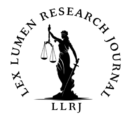Written by Siddhanth Durgesh Nadkarni
1st Year B.A. L.L.B. (Hons),
National Law Institute University (NLIU), Bhopal
December 2024
The Competition Act 2002 deals with, among other things, the assessment of combinations (such as mergers and acquisitions) in order to ascertain whether they will result in, or are most likely to result in an appreciable adverse effect on competition, or ‘AAEC’ for short. While the Act provides the Competition Commission of India (CCI) with a framework for assessing combinations, there exist numerous ambiguities in the standards laid down for AAEC assessment. Through the medium of this blog, the author would like to provide a detailed analysis of these ambiguities along with the relevant subsections, case laws and comparisons with standards in foreign countries:
- Section 20(4) of the Act deals with the factors that must be considered by the CCI in deciding whether a combination “is likely to have an appreciable adverse effect on competition in the relevant market.” This provision, enumerates a number of factors that should be used by the CCI in determining AAEC. These factors include, among others, market share, concentration levels in the relevant market, potential barriers that restrict the entry of competitors and the potential effects of the combination on the consumers and competitors in a market. It is important to note however, that the Act has fallen short to the extent of specifying their relative weightage while determining AAEC and laying down well-defined thresholds for ascertaining when AAEC occurs. For instance, clauses (b) and (i) of Section 20(4) require the CCI to assess the extent to which barriers to entry are created by a combination and the extent to which the combination removes competition in the relevant market (respectively). The Act falls short on defining clear metrics to ascertain when a firm’s market power crosses the line into AAEC. This gives the CCI significant discretion, leading to inconsistent decisions.
Relevant Case Laws:
- CCI v. Thomas Cook (India) Ltd. and Sterling Holiday Resorts (India) Ltd. (2015)
In this case, it was seen that the CCI relied significantly on market share and concentration levels among other factors to arrive at its decision of not allowing the merger of the two companies. However, they could not present a clear approach for explaining how these components interacted to cause AAEC. This led to the parties alleging that the CCI’s assessment was most probably manifestly arbitrary.
- The Holcim-Lafarge Merger of 2015:
The merged corporation of Holcim and Lafarge had a large market share in certain parts of India, particularly in the cement sector. While the CCI required divestitures to address competition issues, it did not define particular market share thresholds that would constitute AAEC. This generated widespread condemnation. In the European Union, market share criteria (e.g., 40% to 50% in relevant markets) are usually regarded as indicators of market-dominance. Since similar thresholds have not been set in India, there often exist interpretive gaps that enable CCI to be arbitrary in its decisions.
- Furthermore, as per Section 31(2) the Competition Commission of India is vested with the discretion of ascertaining whether a combination has caused or is likely to cause AAEC. The devil lies in the term “likely to cause”. This is because of its inherent vagueness. The term falls short on specifying what standard of proof ought to guide the CCI in making decision (e.g., balance of probabilities, beyond a reasonable doubt etc.). This more often than not, results in varying interpretations across different cases.
Relevant Case Law:
- The Jet-Etihad Merger of 2013:
The merger of Jet Airways and Etihad was given the green light by the CCI. This was despite apprehensions regarding the potential dominance and anti-competitive repercussions of the merger. Many experts were of the opinion that the CCI failed to satisfactorily evaluate the “likelihood” of the merger causing AAEC in the civil-aviation sector of India, owing to the muscle of Etihad in the international market. This failure accrues to the fact that the CCI solely focused on Jet Airways’ domestic market position and narrowly defined the relevant market as “domestic aviation” without fully considering the interplay between domestic and international aviation markets. In reality, by using exclusivity agreements, Etihad could easily use its world-wide dominance to reduce domestic competition.
It is also needless to say that the merger would raise surmounting barriers to entry into the aviation sector for relatively newer or smaller competitors in domestic as well as global markets. This is apparent from the apprehensions raised by Spice Jet and Go Air about competitive imbalances resulting from various malpractices including agreements on seat-sharing and capacity management, which had been included in clauses of the agreement between the two airlines. These agreements were questionable because they could significantly restrict competition on many vital international air-routes, particularly Indo-Arabian routes. At this juncture, it is essential to juxtapose the Jet-Etihad merger with the Delta-Northwest Airlines Merger, which took place in the United States, to highlight that in the latter, the Department of Justice thoroughly scrutinized the potential impacts of the merger on aspects such as route concentration and pricing (which can affect consumer choice), whereas in the former, such scrutiny was absent. Its absence was allowed by the aforementioned ambiguity in the construction of Section 31(2).
- The Competition Act also contains certain provisions that may result in the overlapping of efficiencies and AAEC owing to the fact that they are improperly constructed. For instance, Section 20(4)(m) vests in the CCI, the discretion to contemplate whether a combination improves the capacity of the combining firms to meaningfully contribute to the development of the economy while determining whether or not their merger should be allowed. The said provision however, falls short on laying down guidelines for the CCI to weigh efficiency gains against potential anti-competitive effects. Therefore, in situations where both, efficiency gains and anti-competitive effects exist, significant uncertainties are created.
Relevant Case Law:
- The Flipkart-Walmart Merger of 2018:
The merger between the two firms, resulted in the consolidation of the vast monetary and technological resources at Walmart’s disposal with the dominant position enjoyed by Flipkart in India’s booming e-commerce market. While the CCI approved the merger, many concerns were raised over the CCI’s failure to properly balance the probable efficiencies arising as a result of the merger, against the probable reduction of competition in the retail sector. These concerns were well-founded.
Following the merger, the two companies could very conveniently leverage malpractices like predatory pricing, exclusive partnerships, and preferential algorithms to the end of further augmenting their market-dominance. As a result, small-time retailers would not be afforded a fair chance to compete and survive in the retail sector. This would inevitably result in an adverse impact on customer choices in the long term, all because the CCI myopically laid focus only on short-term price benefits. The CCI failed to sufficiently assess this potential harm that the merger would cause to small retailers. This is evident from the fact that The CCI did not enforce any substantial behavioural or structural safeguards (such as a restriction on the pricing strategies of the Flipkart-Walmart alliance) to alleviate the potential adverse effects that the merger could have on the competition in the e-commerce market of India. The fact that the Indian e-commerce market was already dominated only by Amazon and Flipkart at the time did very little to improve the situation.
Moreover, it was not merely competition in the e-commerce sector that could potentially be reduced by this merger. Concerns were raised about Walmart-Flipkart’s buyer power and its ability to force suppliers and manufacturers into unfavourable terms, which could hurt competition in the supply chain too. In fact, Walmart’s global track record includes squeezing suppliers to lower prices, which could lead to reduced margins for Indian manufacturers and suppliers in sectors such as electronics, fashion and FMCG. The CCI clearly failed to conduct a detailed evaluation of this.
CONCLUSION:
There is a strong need for changes to be made in the Competition Act of 2002, to the end of ensuring that ambiguities in the substantiative standards set for AAEC assessment cease to exist. Clear metrics must be laid down to ascertain when a firm’s market power crosses the line into AAEC. Market-share criteria must be put in place to give the CCI, a clear indication that a particular firm has a dominant position in the market. The room for the CCI to have varying interpretations of what would be likely to cause AAEC, must be minimized Lastly, the existing overlap between efficiency gains and anti-competitive effects must be eliminated
SOURCES:
- CIVIL APPEAL NO.13578 OF 2015
Link: https://main.sci.gov.in/supremecourt/2015/35723/35723_2015_Judgement_17-Apr-2018.pdf
- Order u/s 29(1) of the Competition Act, 2002
Link: https://cci.gov.in/images/caseorders/en/c-2013-05-122-21652517521.pdf
- The Flipkart-Walmart Deal: A Look into Competition and Other Related Issues, by Beena Saraswathy
Link: https://isid.org.in/wp-content/uploads/2022/08/DN1807.pdf
- The Merger of Delta Air Lines and Northwest Airlines: An Antitrust White Paper, by the American Antitrust Institute


